How Much Are Gold Coins Worth is a common question for collectors and investors alike, and understanding the factors influencing their value is crucial. At HOW.EDU.VN, we provide expert insights to help you navigate the complexities of gold coin valuation. Discover the key elements that determine the value of these precious assets, from their gold content to their numismatic appeal. Let’s explore gold coin values, bullion value, and collectible coin worth.
1. Understanding the Intrinsic Value: The Gold Content
The intrinsic value of a gold coin is primarily determined by its gold content. This is often referred to as the melt value, which is the value of the gold if the coin were melted down. This value fluctuates with the spot price of gold, which is constantly changing based on market conditions.
1.1. Calculating Melt Value
To calculate the melt value of a gold coin, you need to know:
- The coin’s weight in grams or ounces: This information is typically available from the coin’s specifications.
- The coin’s gold purity: Gold coins are rarely made of pure gold (24 karats) due to its softness. Instead, they are often alloys of gold and other metals like copper or silver to increase durability. Common purities include 90% gold (.900 fine) and 91.67% gold (.9167 fine, or 22 karats).
- The current spot price of gold: This can be found on financial websites, precious metals dealers, and news outlets.
The formula for calculating melt value is:
Melt Value = (Coin Weight in Ounces) x (Gold Purity) x (Spot Price of Gold)For example, let’s calculate the melt value of a U.S. Gold Eagle, which weighs 33.931 grams, is 91.67% gold, and the spot price of gold is $3,116.29 per ounce.
First, convert the coin’s weight to ounces:
33.931 grams / 31.1035 grams per ounce = 1.091 ouncesThen, apply the formula:
Melt Value = (1.091 ounces) x (0.9167) x ($3,116.29) = $3,116.29Therefore, the melt value of the U.S. Gold Eagle is approximately $3,116.29.
1.2. Real-Time Spot Prices
Staying updated with real-time spot prices is crucial for determining the melt value of your gold coins. Here’s a quick look at current spot prices for various precious metals:
| Metal | BID | ASK | CHANGE |
|---|---|---|---|
| Gold | $3,114.29 | $3,116.29 | Up 1.00 |
| Silver | $32.10 | $32.25 | Up 0.07 |
| Platinum | $960.42 | $970.42 | Up 5.00 |
| Palladium | $926.57 | $976.57 | Up 25.00 |
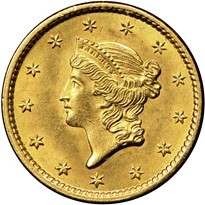
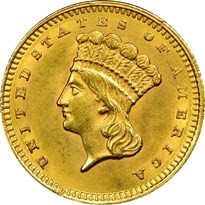
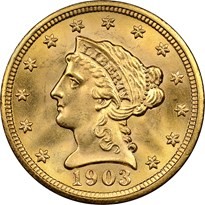
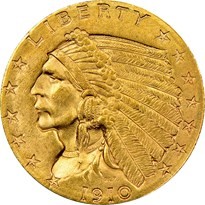
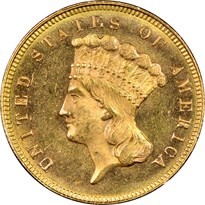
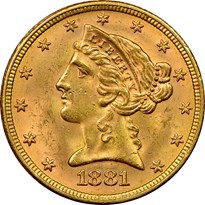
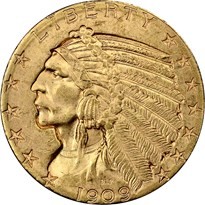
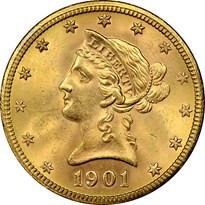
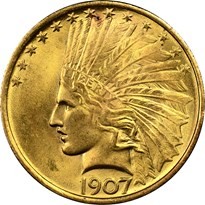
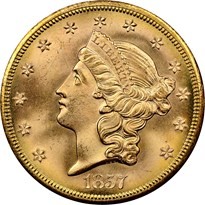
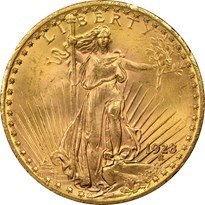
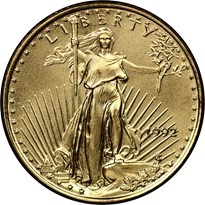
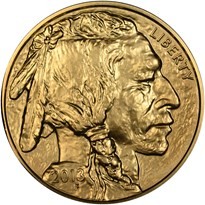
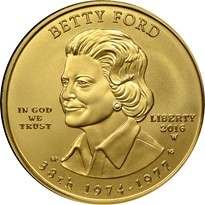
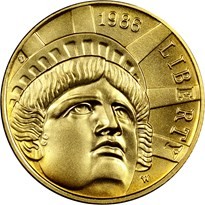
These prices are updated frequently during market hours.
1.3. Gold Coin Composition and Weight
Different gold coins have different compositions and weights, which directly affect their gold content and melt value. Here’s a table illustrating the composition and weight of some common U.S. gold coins:
| Coin | Composition | Weight (g) | AGW (oz.) |
|---|---|---|---|
| Liberty Head (Type One) Gold Dollar (1849-1854) | 90% Gold | 1.672 | 0.04837 |
| Indian Head (Type Two) Gold Dollar (1854-1856) | 90% Gold | 1.672 | 0.04837 |
| Indian Head (Type Three) Gold Dollar (1856-1889) | 90% Gold | 1.672 | 0.04837 |
| Liberty Head $2.50 (1840-1907) | 90% Gold | 4.18 | 0.12094 |
| Indian Head $2.50 (1908-1929) | 90% Gold | 4.18 | 0.12094 |
| Indian Head $3 (1854-1889) | 90% Gold | 5.015 | 0.14512 |
| Liberty Head $5 (1839-1908) | 90% Gold | 8.359 | 0.24187 |
| Indian Head $5 (1908-1929) | 90% Gold | 8.359 | 0.24187 |
| Liberty Head $10 (1838-1907) | 90% Gold | 16.718 | 0.48375 |
| Indian Head $10 (1907-1933) | 90% Gold | 16.718 | 0.48375 |
| Liberty Head $20 (1849-1907) | 90% Gold | 33.436 | 0.9675 |
| Saint-Gaudens $20 (1907-1933) | 90% Gold | 33.436 | 0.9675 |
| Gold Eagle $5 – 1/10 Ounce (1986-Date) | 91.67% Gold | 3.393 | 0.1 |
| Gold Eagle $10 – 1/4 Ounce (1986-Date) | 91.67% Gold | 8.483 | 0.25 |
| Gold Eagle $25 – 1/2 Ounce (1986-Date) | 91.67% Gold | 16.966 | 0.5 |
| Gold Eagle $50 – One Ounce (1986-Date) | 91.67% Gold | 33.931 | 1 |
| Buffalo $50 – One Ounce (2006-Date) | 99.99% Gold | 31.105 | 1 |
| First Spouse $10 – 1/2 Ounce (2007-Date) | 99.99% Gold | 15.552 | 0.5 |
| Modern Commemorative $5 (1982-Date) | 90% Gold | 8.36 | 0.2419 |
Where:
Composition is the gold purity of the coin.
Weight (g) is the total weight of the coin in grams.
AGW (oz.) is the actual gold weight in ounces.
Knowing these specifications helps in accurately calculating the melt value.
2. The Subjective Value: Numismatic Considerations
While the melt value provides a baseline, the numismatic value—or collector’s value—can significantly exceed the gold content’s worth. This value is influenced by factors such as rarity, condition, historical significance, and collector demand.
2.1. Rarity and Mintage
The rarity of a gold coin is a primary driver of its numismatic value. Coins with low mintage numbers (the number of coins originally produced) are generally more valuable due to their scarcity.
For example, the 1933 Saint-Gaudens Double Eagle is one of the most famous examples of a rare U.S. gold coin. Although over 445,000 coins were minted, none were officially released into circulation due to the gold recall of 1933. Most were melted down, and only a few survived, making them incredibly rare and valuable. In 2021, one specimen sold for over $18.9 million at auction, setting a record as one of the most expensive coins ever sold.
2.2. Condition and Grading
The condition of a coin is a critical factor in determining its value. Coins are graded on a scale that typically ranges from Poor (PR) to Mint State (MS), with several intermediate grades. The Sheldon Scale, developed by numismatist William Sheldon, is commonly used to assess coin condition.
Here’s a brief overview of the Sheldon Scale:
- Poor (PR-1): Heavily worn, with significant damage.
- Fair (FR-2): Very worn, with some details visible.
- Good (G-4): Worn, but major design elements are visible.
- Very Good (VG-8): Moderately worn, with some finer details visible.
- Fine (F-12): Lightly worn, with most details visible.
- Very Fine (VF-20, VF-30): Slightly worn, with sharp details.
- Extremely Fine (EF-40, EF-45): Very light wear, with almost all details sharp.
- About Uncirculated (AU-50, AU-55, AU-58): Traces of wear, with most details sharp.
- Mint State (MS-60 to MS-70): Uncirculated condition, with varying degrees of luster and imperfections. MS-70 represents a perfect coin.
Professional grading services like Numismatic Guaranty Corporation (NGC) and Professional Coin Grading Service (PCGS) assess and certify the condition of coins, providing a standardized and trusted evaluation. Coins graded by these services often command higher prices due to the assurance of their condition and authenticity.
2.3. Historical Significance
Coins with significant historical value can be highly sought after by collectors. This might include coins from particular eras, those associated with significant historical events, or those with unique stories.
For example, early U.S. gold coins like the 1795-1804 Liberty Head Gold Eagles are highly valued due to their historical importance as some of the first gold coins produced by the United States Mint. Coins from the California Gold Rush era also hold special significance.
2.4. Collector Demand
Ultimately, the value of a numismatic coin is determined by what collectors are willing to pay. Demand can fluctuate based on trends, the popularity of certain coin types, and the overall health of the coin market. Coins that are part of popular series or those with unique characteristics often attract more interest and higher prices.
3. Key U.S. Gold Coins and Their Values
Understanding the specifics of different U.S. gold coins can help you assess their potential value. Here are some key U.S. gold coins, along with factors that influence their worth:
3.1. Liberty Head Gold Dollar (1849-1854)
These small gold coins were the first gold dollars produced by the U.S. Mint. They are 90% gold and have a weight of 1.672 grams. Their value is influenced by their condition and rarity. Coins in higher grades and those from scarcer dates can command significant premiums.
3.2. Indian Head Gold Dollar (1854-1889)
The Indian Head Gold Dollar comes in three types. Like the Liberty Head Gold Dollar, they are 90% gold and weigh 1.672 grams. The Type Two and Type Three coins are generally more common than the Liberty Head, but specific dates and mintmarks can still be quite valuable.
3.3. Liberty Head $2.50 (1840-1907)
Also known as Quarter Eagles, these coins are 90% gold and weigh 4.18 grams. Key dates and mintmarks can significantly increase their value. Coins in exceptional condition are highly prized by collectors.
3.4. Indian Head $2.50 (1908-1929)
These coins feature a unique incuse design, where the design elements are pressed into the surface rather than raised. They are 90% gold and weigh 4.18 grams. While the overall design is distinctive, their value still depends on condition and specific dates.
3.5. Indian Head $3 (1854-1889)
The Indian Head $3 gold coin is one of the more unusual denominations in U.S. coinage. These coins are 90% gold and weigh 5.015 grams. Their unique denomination and relatively low mintage make them highly sought after by collectors.
3.6. Liberty Head $5 (1839-1908)
Known as Half Eagles, these coins are 90% gold and weigh 8.359 grams. They were produced for many years, and key dates and mintmarks can command substantial premiums.
3.7. Indian Head $5 (1908-1929)
Like the Indian Head $2.50, these coins feature an incuse design. They are 90% gold and weigh 8.359 grams. The unique design and specific dates influence their collector value.
3.8. Liberty Head $10 (1838-1907)
Known as Eagles, these coins are 90% gold and weigh 16.718 grams. They were a workhorse of commerce for many years, and certain dates and mintmarks are highly prized.
3.9. Indian Head $10 (1907-1933)
These coins are 90% gold and weigh 16.718 grams. The Indian Head $10 is known for its intricate design and relatively short production run, adding to its collector appeal.
3.10. Liberty Head $20 (1849-1907)
Known as Double Eagles, these coins are 90% gold and weigh 33.436 grams. They are larger and contain nearly a full ounce of gold, making them popular both for their gold content and numismatic value.
3.11. Saint-Gaudens $20 (1907-1933)
Considered by many to be the most beautiful U.S. coin, the Saint-Gaudens Double Eagle is 90% gold and weighs 33.436 grams. Designed by Augustus Saint-Gaudens, these coins are highly sought after by collectors and investors alike.
3.12. Gold Eagle (1986-Date)
Modern Gold Eagles are bullion coins produced by the U.S. Mint. They are available in various sizes (1/10 oz, 1/4 oz, 1/2 oz, and 1 oz) and are 91.67% gold (22 karats), with the balance being copper and silver for added durability.
3.13. Buffalo Gold (2006-Date)
The Buffalo Gold coin is a 24-karat gold bullion coin produced by the U.S. Mint. It contains one troy ounce of pure gold (99.99%) and is based on the famous Buffalo Nickel design.
3.14. First Spouse Gold (2007-Date)
The First Spouse Gold coins are 24-karat gold coins produced by the U.S. Mint to honor the spouses of U.S. presidents. These coins contain one-half troy ounce of pure gold (99.99%).
3.15. Modern Commemorative $5 (1982-Date)
These coins are issued to commemorate various events and people. They are 90% gold and weigh 8.36 grams. Their value can vary depending on the specific commemorative issue and its popularity among collectors.
4. Factors Affecting Gold Coin Prices
Several factors beyond melt value and numismatic considerations can influence the price of gold coins.
4.1. Economic Conditions
Economic conditions, such as inflation, interest rates, and overall economic stability, can significantly impact gold prices. During times of economic uncertainty, investors often turn to gold as a safe-haven asset, driving up demand and prices.
4.2. Geopolitical Events
Geopolitical events, such as wars, political instability, and international crises, can also affect gold prices. Gold is often seen as a hedge against geopolitical risk, and its price tends to rise during times of turmoil.
4.3. Currency Fluctuations
Currency fluctuations, particularly the strength of the U.S. dollar, can influence gold prices. Gold is often priced in U.S. dollars, so a weaker dollar can make gold more attractive to foreign buyers, increasing demand and prices.
4.4. Market Sentiment
Market sentiment, or the overall attitude of investors towards gold, can play a significant role in price movements. Positive sentiment can lead to increased buying pressure, while negative sentiment can result in selling pressure.
4.5. Supply and Demand
Like any commodity, gold prices are influenced by supply and demand. Factors such as gold mining production, central bank policies, and investment demand can affect the supply and demand balance, impacting prices.
5. Where to Buy and Sell Gold Coins
There are several options for buying and selling gold coins, each with its own advantages and disadvantages.
5.1. Local Coin Shops
Local coin shops can be a good option for buying and selling gold coins, especially if you prefer face-to-face transactions. They offer the opportunity to examine coins in person and negotiate prices. However, prices may vary widely, so it’s important to do your research and compare offers.
5.2. Online Dealers
Online dealers offer a convenient way to buy and sell gold coins from the comfort of your own home. They often have a wider selection and more competitive prices than local coin shops. However, it’s important to choose reputable dealers and be aware of shipping and insurance costs.
5.3. Auctions
Auctions can be a good option for buying rare or high-value gold coins. They offer the potential to find unique items and sometimes get good deals. However, it’s important to do your research and set a budget before bidding.
5.4. Private Sales
Private sales involve buying and selling gold coins directly from other collectors or investors. This can offer the potential to find good deals, but it’s important to be cautious and verify the authenticity and condition of the coins.
5.5. Banks and Financial Institutions
Some banks and financial institutions offer gold coins for sale, particularly bullion coins like Gold Eagles and Buffalo Gold. This can be a convenient option, but prices may be higher than those offered by coin dealers or online retailers.
6. Protecting Your Investment
Protecting your gold coin investment is crucial to maintaining its value. Here are some tips for storing and insuring your gold coins.
6.1. Proper Storage
Proper storage is essential to protect your gold coins from damage and theft. Consider the following storage options:
- Safe Deposit Box: Renting a safe deposit box at a bank or credit union can provide a secure storage location for your gold coins.
- Home Safe: A home safe can be a convenient option, but it’s important to choose a high-quality safe that is fireproof and burglar-resistant.
- Professional Storage: Professional storage facilities offer specialized storage solutions for precious metals, including climate control and advanced security measures.
6.2. Insurance
Insurance is essential to protect your gold coins from loss or damage. Consider the following insurance options:
- Homeowners Insurance: Check your homeowners insurance policy to see if it covers precious metals. You may need to increase your coverage or add a rider to adequately protect your gold coins.
- Specialized Insurance: Specialized insurance policies are available specifically for precious metals and collectibles. These policies typically offer broader coverage and higher limits than homeowners insurance.
6.3. Documentation and Appraisal
Keep detailed records of your gold coin collection, including purchase dates, prices, and descriptions. Consider getting your coins appraised by a professional numismatist to establish their value for insurance purposes.
7. Expert Insights from HOW.EDU.VN
At HOW.EDU.VN, we understand the complexities of valuing gold coins. Our team of experienced numismatists and financial experts can provide you with the insights and guidance you need to make informed decisions about buying, selling, and investing in gold coins.
7.1. Access to Top Experts
We connect you directly with leading experts in the field, including numismatists, financial advisors, and precious metals dealers. Our experts can provide personalized advice and answer your specific questions about gold coin valuation.
7.2. Personalized Guidance
We offer personalized guidance tailored to your individual needs and goals. Whether you’re a seasoned collector or a first-time investor, we can help you navigate the gold coin market with confidence.
7.3. Comprehensive Resources
Our website features a wealth of information on gold coins, including articles, guides, and market analysis. We provide you with the knowledge and tools you need to make informed decisions about your gold coin investments.
8. Real-World Examples and Case Studies
To illustrate the importance of expert advice, consider the following case studies:
8.1. Case Study 1: The Misidentified Coin
A collector purchased a gold coin online, believing it to be a rare variety. However, after consulting with a numismatist from HOW.EDU.VN, they discovered that the coin was a common type with a lower value. The expert advice saved the collector from overpaying for the coin.
8.2. Case Study 2: The Underinsured Collection
An investor stored their gold coin collection in a home safe, assuming it was adequately protected by their homeowners insurance. However, after a burglary, they discovered that their policy had insufficient coverage for their precious metals. With guidance from HOW.EDU.VN, they obtained specialized insurance to fully protect their investment.
8.3. Case Study 3: The Strategic Sale
A collector decided to sell a portion of their gold coin collection to fund a retirement account. With advice from a financial advisor at HOW.EDU.VN, they identified the coins with the greatest potential for appreciation and strategically timed their sale to maximize their returns.
9. How HOW.EDU.VN Can Help
Navigating the world of gold coin valuation can be challenging, but HOW.EDU.VN is here to help. We offer a range of services to assist you with your gold coin investments.
9.1. Expert Consultations
Connect with our team of experienced experts for personalized consultations on gold coin valuation, buying, selling, and storage.
9.2. Market Analysis
Stay informed with our comprehensive market analysis and insights on gold prices, trends, and factors affecting the value of gold coins.
9.3. Educational Resources
Access our extensive library of articles, guides, and videos on gold coins, numismatics, and precious metals investing.
9.4. Appraisal Services
Obtain professional appraisals of your gold coin collection to establish its value for insurance, estate planning, or selling purposes.
9.5. Secure Storage Solutions
Find secure storage solutions for your gold coins, including safe deposit boxes, home safes, and professional storage facilities.
10. FAQs About Gold Coin Values
Here are some frequently asked questions about gold coin values:
- How is the melt value of a gold coin calculated?
- The melt value is calculated by multiplying the coin’s weight in ounces, its gold purity, and the current spot price of gold.
- What factors affect the numismatic value of a gold coin?
- Factors include rarity, condition, historical significance, and collector demand.
- Where can I find the current spot price of gold?
- You can find the spot price of gold on financial websites, precious metals dealers, and news outlets.
- How do I determine the condition of a gold coin?
- Coins are graded on a scale that typically ranges from Poor (PR) to Mint State (MS). Professional grading services like NGC and PCGS assess and certify the condition of coins.
- What is the Sheldon Scale?
- The Sheldon Scale is a numerical scale used to assess the condition of coins, ranging from 1 (Poor) to 70 (Perfect Mint State).
- Where can I buy and sell gold coins?
- You can buy and sell gold coins at local coin shops, online dealers, auctions, private sales, and some banks and financial institutions.
- How should I store my gold coins to protect them from damage and theft?
- Consider storing your gold coins in a safe deposit box, home safe, or professional storage facility.
- Do I need insurance for my gold coin collection?
- Yes, insurance is essential to protect your gold coins from loss or damage. Check your homeowners insurance policy or obtain specialized insurance for precious metals.
- How can HOW.EDU.VN help me with my gold coin investments?
- HOW.EDU.VN offers expert consultations, market analysis, educational resources, appraisal services, and secure storage solutions to assist you with your gold coin investments.
- What are some key U.S. gold coins to consider?
- Key U.S. gold coins include Liberty Head Gold Dollars, Indian Head Gold Dollars, Liberty Head $2.50, Indian Head $2.50, Indian Head $3, Liberty Head $5, Indian Head $5, Liberty Head $10, Indian Head $10, Liberty Head $20, Saint-Gaudens $20, Gold Eagles, Buffalo Gold, First Spouse Gold, and Modern Commemorative $5.
Understanding how much are gold coins worth involves considering both their intrinsic gold content and their numismatic value. By staying informed and seeking expert advice, you can make informed decisions about buying, selling, and investing in these valuable assets.
Don’t navigate the complexities of gold coin valuation alone. At HOW.EDU.VN, our team of experienced experts is ready to provide you with personalized guidance and support. Whether you’re a seasoned collector or a first-time investor, we can help you make informed decisions and achieve your financial goals. Contact us today for a consultation.
Address: 456 Expertise Plaza, Consult City, CA 90210, United States
WhatsApp: +1 (310) 555-1212
Website: how.edu.vn
